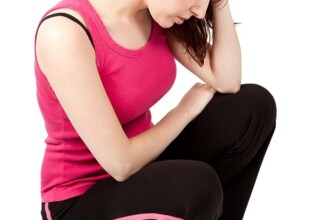Embrace a Healthier Home: The Ultimate Guide to Chemical-Free Cleaning
Table of Contents
- Introduction to Chemical-Free Cleaning
- The Harmful Effects of Conventional Cleaning Products
- 2.1 Health Risks
- 2.2 Environmental Impact
- Benefits of Chemical-Free Cleaning
- 3.1 Health Benefits
- 3.2 Environmental Benefits
- 3.3 Cost Savings
- Essential Ingredients for Chemical-Free Cleaning
- 4.1 Vinegar
- 4.2 Baking Soda
- 4.3 Castile Soap
- 4.4 Essential Oils
- DIY Chemical-Free Cleaning Recipes
- 5.1 All-Purpose Cleaner
- 5.2 Glass Cleaner
- 5.3 Bathroom Cleaner
- 5.4 Laundry Detergent
- Cleaning Techniques for Different Areas of Your Home
- 6.1 Kitchen
- 6.2 Bathroom
- 6.3 Living Areas
- 6.4 Bedrooms
- Transitioning to a Chemical-Free Cleaning Routine
- Future Trends in Cleaning and Environmental Sustainability
Introduction to Chemical-Free Cleaning
In the quest for a healthier lifestyle, many individuals are turning their attention to the environments they inhabit, particularly their homes. Traditional cleaning products, packed with synthetic chemicals, can be detrimental not only to human health but also to the planet. It's time to embrace a healthier home by exploring the methods, benefits, and practices associated with chemical-free cleaning.
This extensive guide will delve deep into the world of chemical-free cleaning, covering various aspects including the harmful effects of conventional products, the benefits of opting for natural solutions, essential ingredients needed, and practical DIY recipes. We will also tackle transitioning to this new lifestyle and future trends that may shape our cleaning habits.
The Harmful Effects of Conventional Cleaning Products
Health Risks
Conventional cleaning products are often laden with harmful chemicals that can cause a variety of health issues. Individuals exposed to these products can suffer from respiratory problems, skin irritations, and other serious health complications.
Respiratory Issues
Many traditional cleaning products contain volatile organic compounds (VOCs), which can evaporate into the air and be inhaled. Exposure to VOCs can lead to respiratory problems, allergic reactions, headaches, and even neurological damage in extreme cases.
Skin Irritations
Harsh chemicals in cleaning products can cause skin irritations, rashes, or burns, particularly for individuals with sensitive skin or preexisting conditions.
Long-term Health Effects
Continuous exposure to toxic chemicals can lead to more severe health issues, including hormone disruption, reproductive issues, and some studies suggest a potential link to certain types of cancer.
Environmental Impact
Conventional cleaners don't just affect human health; they also have a significant environmental impact.
Water Pollution
When these products are washed down the drain, they may end up in rivers and oceans, harming aquatic life and disrupting ecosystems. Chemicals such as phosphates and surfactants can lead to algal blooms, depleting oxygen levels in water bodies and creating dead zones.
Air Pollution
The emissions from VOCs contribute to air pollution, which is not only harmful to human health but also leads to broader environmental issues such as global warming.
Solid Waste
Many cleaning products come in single-use plastic packaging, contributing to the growing problem of plastic waste. Switching to bulk or reusable containers sourced from natural cleaning ingredients can significantly reduce your carbon footprint.
Benefits of Chemical-Free Cleaning
Health Benefits
Improved Indoor Air Quality
Transitioning to chemical-free cleaning can enhance indoor air quality. Cleaning products that are free from VOCs contribute to a healthier atmosphere, minimizing the risk of respiratory ailments and allergies.
Reduction of Toxins
Using natural ingredients means a reduction in harmful substances present in your home. This leads to a safer environment for children and pets, who are often more vulnerable to chemical exposures.
Environmental Benefits
Sustainable Practices
Using eco-friendly cleaning products made from natural ingredients aligns with sustainable living practices. These products generally have a lower environmental impact across their lifecycle compared to conventional cleaners.
Conservation of Resources
Chemical-free cleaning often encourages the use of reusable materials (e.g., cloths instead of paper towels), effectively reducing waste and conserving resources.
Cost Savings
Affordable Ingredients
Many chemical-free cleaning agents are common household items that are cost-effective and readily available. For instance, vinegar and baking soda are cheap alternatives to commercial cleaning products.
Long-term Savings
By adopting DIY cleaning solutions, consumers can avoid the ongoing expense of purchasing multiple conventional cleaners, leading to overall savings in household budgets.
Essential Ingredients for Chemical-Free Cleaning
When considering a move towards chemical-free cleaning, it is essential to become familiar with natural substitutes that can replace harsher chemicals.
Vinegar
Properties of Vinegar
White vinegar is highly versatile and possesses antibacterial properties. It can effectively cut through grease, deodorize, and remove stains.
Uses in Cleaning
- Surface Cleaner: A mixture of vinegar and water is an excellent surface cleaner for kitchens and bathrooms.
- Deodorizer: Vinegar can neutralize odors, making it ideal for refrigerators and trash cans.
Baking Soda
Properties of Baking Soda
Baking soda is a natural deodorizer and mild abrasive, making it suitable for scrubbing surfaces without scratching.
Uses in Cleaning
- Scrubbing Agent: Use baking soda to create a paste with water for scrubbing sinks, tubs, and countertops.
- Odor Neutralizer: Place an open box in the fridge to absorb odors or sprinkle on carpets before vacuuming.
Castile Soap
Properties of Castile Soap
A versatile soap made from plant oils, Castile soap is biodegradable, making it an eco-friendly cleaning agent.
Uses in Cleaning
- Dish Soap: Use diluted Castile soap for washing dishes and surfaces.
- Laundry Detergent: It can also be used in homemade laundry solutions.
Essential Oils
Benefits of Essential Oils
Essential oils provide not only pleasant fragrances but also antibacterial and antiviral properties.
Popular Choices
- Tea Tree Oil: Recognized for its antifungal and antibacterial qualities, ideal for bathroom cleaners.
- Lavender Oil: Offers calming effects and serves as a natural disinfectant, great for laundry.
DIY Chemical-Free Cleaning Recipes
Creating your own cleaning solutions at home can be both fun and sustainable. Here, we present several recipes for common cleaning needs.
All-Purpose Cleaner
Ingredients:
- 1 cup white vinegar
- 1 cup water
- Optional: 10-15 drops essential oil for fragrance
Instructions:
- Combine vinegar and water in a spray bottle.
- Add essential oils if desired.
- Shake well before each use. Ideal for countertops and general surfaces.
Glass Cleaner
Ingredients:
- 1 cup water
- 1 cup white vinegar
- 1 tablespoon cornstarch (optional for streak-free finish)
Instructions:
- Mix all ingredients in a spray bottle.
- Spray onto surfaces and wipe with a lint-free cloth.
Bathroom Cleaner
Ingredients:
- 1 cup baking soda
- ½ cup liquid Castile soap
- Optional: 10 drops of tea tree oil
Instructions:
- Mix baking soda and Castile soap to create a paste.
- Apply to tiles, tubs, and sinks, let sit, and scrub before rinsing.
Laundry Detergent
Ingredients:
- 1 bar of grated natural soap (e.g., Castile soap)
- 1 cup washing soda
- 1 cup borax (optional)
Instructions:
- Combine all dry ingredients and store in an airtight container.
- Use 1-2 tablespoons per laundry load.
Cleaning Techniques for Different Areas of Your Home
Different areas of the home require tailored cleaning techniques. Here’s how to approach cleaning various spaces using chemical-free methods.
Kitchen
Surface Cleaning
Utilize the all-purpose cleaner for countertops and tables.
Appliance Cleaning
- Microwave: Place a bowl of water and vinegar inside, heat for 5 minutes, then wipe down.
- Refrigerator: Use a mixture of vinegar and water to clean shelves.
Bathroom
Toilet Cleaning
Sprinkle baking soda into the bowl, add vinegar, let sit for 10 minutes, then scrub with a toilet brush.
Shower and Tub
Use baking soda paste or the bathroom cleaner recipe for grime and soap scum.
Living Areas
Dusting
Use a damp cloth with a bit of vinegar to effectively pick up dust without spreading it into the air.
Fabric Cleaning
Sprinkle baking soda on upholstery, let sit, and then vacuum to remove odors.
Bedrooms
Bed Linen
Use homemade laundry detergent, and add a cup of white vinegar during the rinse cycle to freshen and soften linens.
Air Freshening
Place bowls of vinegar in the room to absorb odors or diffuse essential oils for a pleasant scent.
Transitioning to a Chemical-Free Cleaning Routine
Changing your cleaning practices can be overwhelming, but with careful planning, the switch can be made seamlessly.
Steps to Take
- Assess Current Products: Evaluate what conventional cleaners you have and prioritize which to replace.
- Research and Create Recipes: Familiarize yourself with alternative ingredients and DIY recipes.
- Gradual Transition: Start by replacing one product at a time to avoid overwhelming yourself.
Common Challenges and Solutions
-
Challenge: Strong odors can linger after using natural products.
- Solution: Use essential oils to enhance scents or add vinegar to eliminate odors.
- Challenge: Efficacy concerns with natural products.
- Solution: Research reviews on DIY solutions, noting that some products may require experimentation to achieve desired results.
Future Trends in Cleaning and Environmental Sustainability
The movement towards chemical-free cleaning is part of a broader trend focusing on sustainability. Here we explore potential future directions.
Increased Awareness
As consumers become more aware of the impact of chemicals on health and the environment, demand for non-toxic products is likely to continue to grow.
Innovations in Natural Products
Expect to see innovations in natural cleaning technologies, such as improvements in formulations that enhance efficacy without compromising safety.
Governmental and Regulatory Changes
Legislation aimed at reducing the use of toxic chemicals in household products may strengthen the shift toward safer alternatives.
Frequently Asked Questions (FAQ)
Q1: Are chemical-free cleaning products as effective as traditional cleaners?
A1: Many chemical-free products utilize natural acids and alkalines to tackle dirt and grime effectively. Personal testimony and studies suggest they often match or exceed the effectiveness of traditional cleaners.
Q2: How can I ensure the safety of DIY cleaning products?
A2: Stick to well-documented recipes with common household items, and perform spot tests if you're concerned about fabric or surface compatibility.
Q3: Can I mix different DIY cleaners?
A3: Be cautious about mixing DIY cleaners; for instance, mixing vinegar and baking soda creates a reaction that can neutralize their cleaning properties.
Resources
| Source | Description | Link |
|---|---|---|
| The Environmental Working Group | Provides ratings for cleaning products and health guidelines. | EWG |
| Natural Cleaning Recipes | A vast collection of DIY cleaning solutions. | Wellness Mama |
| Consumer Reports | Offers comparisons and reviews on cleaning products. | Consumer Reports |
| Sustainability Resources | Information on living sustainably, including cleaning. | Sustainable Household Cleaning |
| Dr. Bronner's | Natural cleaning products, including Castile soap. | Dr. Bronner's |
Conclusion
Embracing chemical-free cleaning is not only a choice for a healthier home but a commitment to improve overall well-being for ourselves and the environment. By understanding the harmful effects of conventional products and the benefits of natural alternatives, we can make informed decisions that shape our lifestyles and demonstrate care for our planet.
The shift towards eco-friendly cleaning practices is more than a trend; it signifies a broader cultural movement towards sustainability and well-being. As consumers continue to advocate for transparency and safety in household products, the landscape will undoubtedly evolve, presenting new opportunities for healthier cleaning methods.
Disclaimer
The information contained in this article is intended for educational purposes only and should not be construed as medical advice. Always consult your healthcare provider before making significant lifestyle or health changes. The author disclaims any liability for the consequences of actions taken based on the information provided herein.










